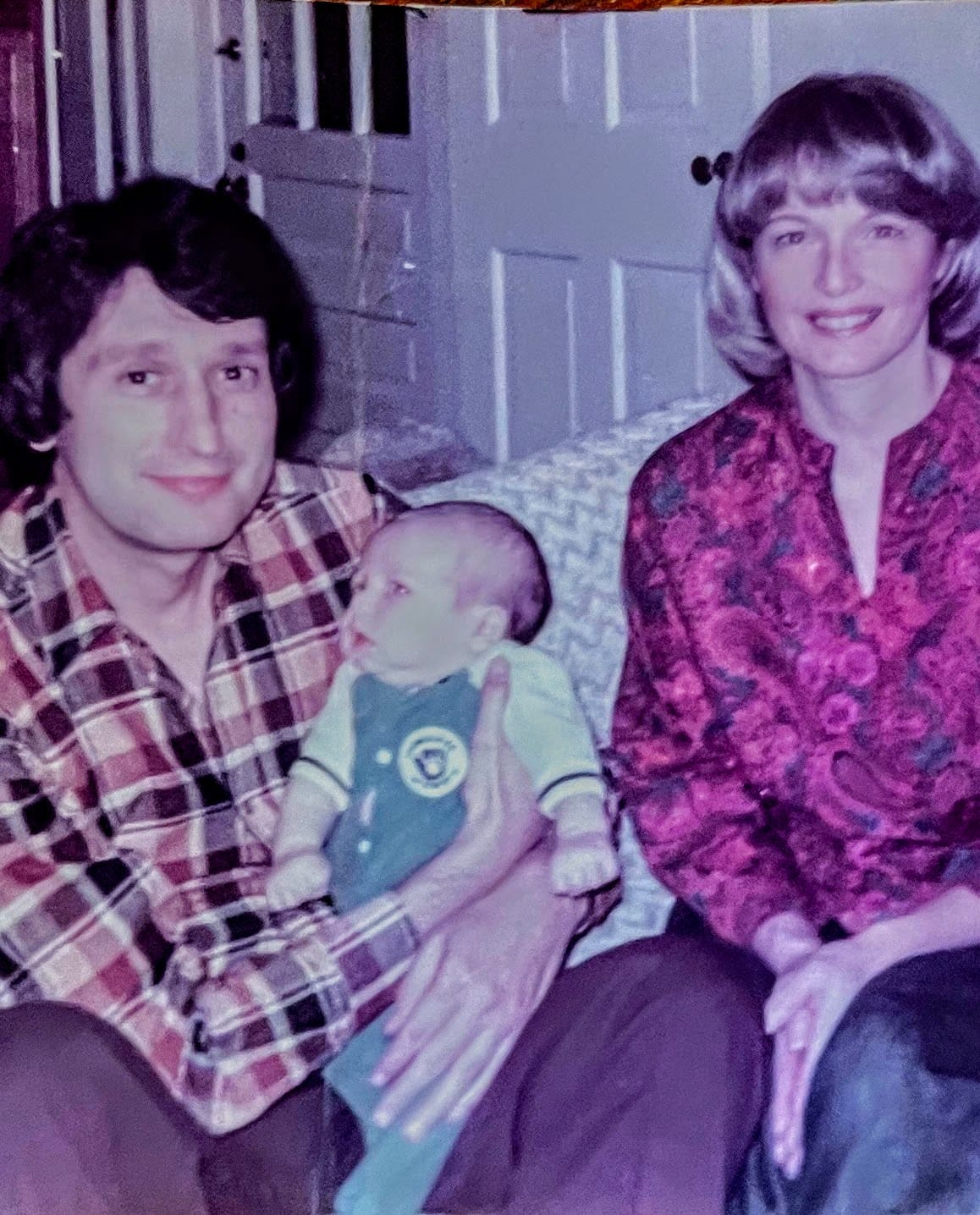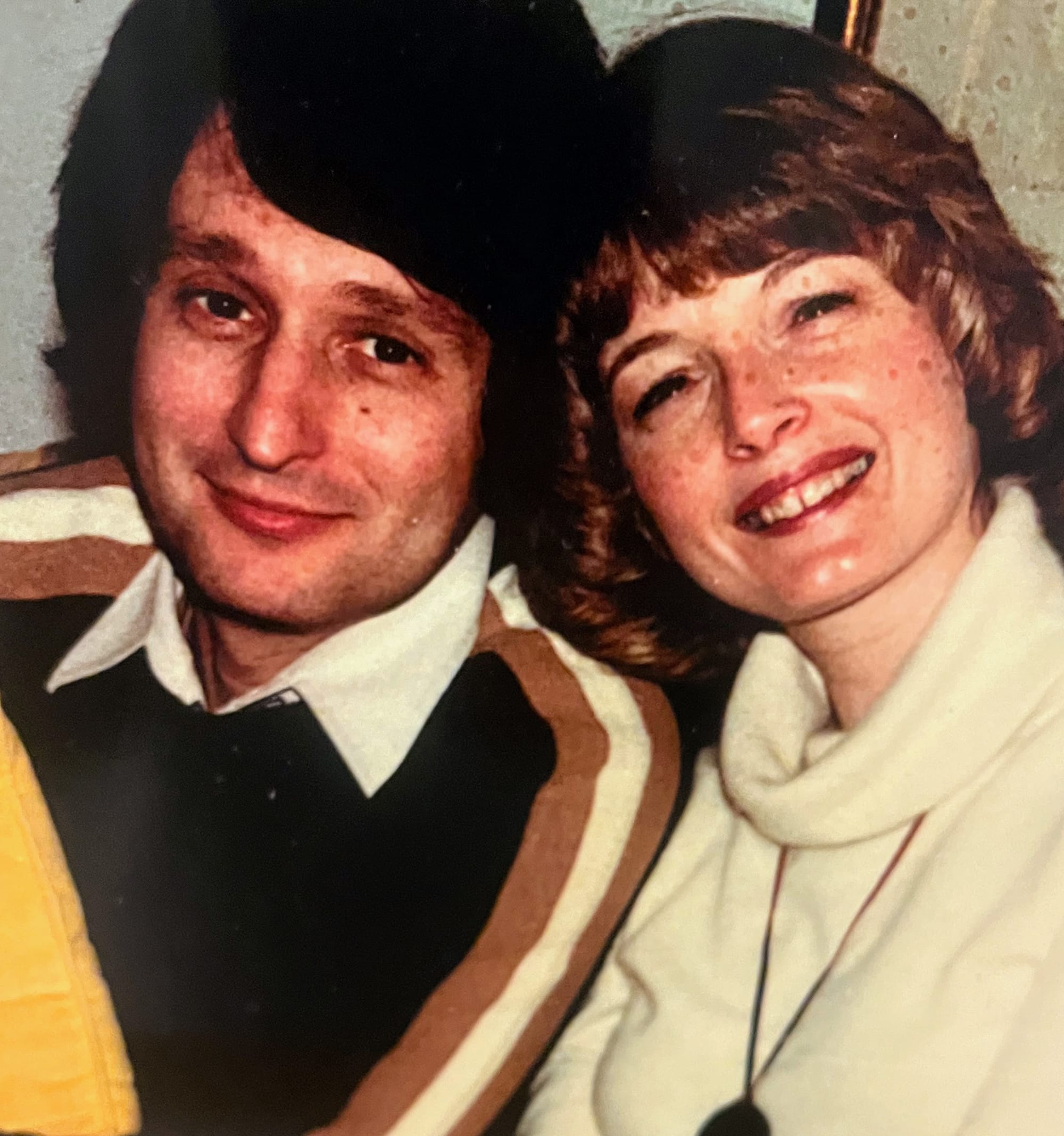Jerry and Linda Gutman have been married for 45 years. A second marriage for both, blending their families was of the utmost importance. Jerry and Linda taught in the Oak Park school district for a combined 72 years. They were planners — travel, social engagements, even retirement, as well as new work-related opportunities once leaving the district. What they didn’t prepare for was Vascular Dementia and Alzheimer’s.
Jerry was the Social Studies department chair at Clinton Junior High School in 1965. Linda was hired to teach Social Studies in 1967 and their friendship blossomed — on a professional and platonic basis. At the time Linda was going through a divorce and Jerry became her confidant. Jerry also filed for divorce and the two found solace when discussing their failed marriages. Once Linda’s divorce was finalized, they started to date. Jerry’s divorce was prolonged since he was helping his wife become financially independent.
Jerry told me, “I believe some people suspected we were seeing each other romantically and may have thought that was the reason we were divorcing our spouses. That is absolutely not true. In fact, Linda and I did not get married until each had been divorced for a little over five years.” After such a long time dating, Jerry’s children finally asked him when he was going to propose to Linda.
Being called “mom” by Jerry’s children was never in Linda’s purview. She was comfortable with them using her name. Linda had no intention of competing with their mother. Says Jerry, “She introduced the kids to Christmas trees and presents, but also prepared Chanukah food and made the best latkes. She had a Jewish cooking mentor who she taught with.” Jerry made sure to supply the menorah, candles — and whatever else was needed for the holiday.
Easter dinner was a regular event along with Passover and the High Holidays. Linda immersed herself in learning about Jewish traditions and popular catch phrases. But it was still important for her to carry on those customs passed down by her mother.
Jerry had a stellar teaching career. He was highly respected, passionate about his well curated lesson plans, and had solid relationships with his students. His career gained momentum when Jerry made a lateral move to Oak Park High School to become the department chair. He taught U.S. History, American Government and introduced Asian Studies and International Affairs into the curriculum.
In 1983 Jerry was asked to teach AP U.S. History in the afternoons at a new and innovative program — Center for Advanced Studies and the Arts, better known as CASA. Ironically, the program was housed in his old stomping grounds. Clinton Junior High was now renamed Clinton Center. Three short years later, Jerry was appointed director of the program and began to incorporate new and enticing classes for the curious minds of high school students. Even though Jerry had complete responsibility for the program, he still taught two classes as well — he had a full plate and loved every minute of it.
Jerry was the director of CASA until he retired after 40 years with the Oak Park School District in 2000. But for Jerry, retirement meant moving forward to another adventure in education. Leadership from the new Jewish Academy of Metro Detroit reached out to him to head their new AP program. He taught part-time for seven years and then was hired to be a co-Dean of secular studies on a full-time basis.
After 11 years at what was by then Frankel Jewish Academy, Jerry retired for a second time in 2011 at 73. Along the way, he was an adjunct instructor at Lawrence Technological University for 35 years. Over the years he taught evening undergraduate courses in Global Studies, seminars in American History and Holocaust Studies.
Linda’s career trajectory was equally as impressive. After teaching at Clinton Junior High for two years she received the ever dreaded “Pink Slip.” This was a formal notice given to teachers that services were no longer needed due to another teacher’s seniority — Linda was bumped from her position.
Linda got another degree from Eastern Michigan and became a reading specialist. But after a few years on the job, Linda wasn’t satisfied and returned to teach Social Studies. Then an opportunity presented itself quite naturally. Jerry and Linda hosted a foreign exchange student from Japan for the 1981-82 school year. Michiyo and Lori, Jerry’s daughter, became close friends and graduated together. After graduation Michiyo’s family invited the Gutman’s to visit Japan.
Jerry told me, “Linda became intrigued with the culture and language of Japan. When we returned from our trip, Linda enrolled in a Japanese program at Eastern Michigan and became certified to teach Japanese. She joined the CASA staff in the afternoons and her program was an instant hit.” Eventually Linda taught Japanese full time.
I was a firsthand observer of Linda’s vibrant classroom activities. I was hired in 1991, by Jerry, to teach Debate and Forensics at CASA — my classroom was next to Linda’s. Students gravitated to her class because she was an enthusiastic and kind teacher who immersed her students into a full spectrum of Japanese language and culture.
Classroom decorations were authentic and inviting. While visiting Japan, Linda procured original posters and artwork to create a stimulating classroom landscape. She also organized and chaperoned four student trips to the Shiga Prefecture. Jerry wasn’t going to miss out on an adventure — he helped chaperone two of the trips.
Michigan State University hired her to organize and then select Michigan students to study abroad in Japan. Not only was she instrumental in preparing these students for their upcoming adventure, Linda joined them. Says Jerry, “I was immensely proud of Linda’s accomplishments. As part of her Japanese education program, she spent two months in the summer furthering her studies. This time I did not return to Japan with Linda. I received a Fulbright Scholarship to study in Israel. We were in different locations but still connected.”
With 32 years under her belt, Linda decided to retire in 1999. But just like Jerry, the pull of educating students was still in her blood. For six more years Linda was involved with the preparations for students to embark on a trip to Japan.
While still teaching, Jerry and Linda traveled extensively. Jerry said, “We would take two large vacations of three to four weeks a year during the summer and smaller trips in the fall.” They toured Italy, France, Eastern Europe, a safari in Africa, and trips to Chile, Brazil and Argentia. After retirement, they kicked their travel plans up a notch by spending a month in New Zealand and Australia.
In 2015 Jerry noticed subtle differences in Linda. “Linda was having a bit of trouble with her iPhone and computer. Her short-term memory was challenged as well. I noticed that Linda was having difficulty with her executive functions such as following recipes and being a bit more confused.”
At this point, Jerry began to keep a journal of the changes he saw in Linda. After no more than a year he discussed these issues with Linda’s doctor. He did not notice any differences in her demeanor when Linda came in for her yearly physical. Jerry persisted and convinced her doctor to order a neuropsych exam at Beaumont Hospital.
“The results of the exam concluded that Linda’s executive functions were compromised as well as her processing and retrieving skills. Next, an MRI and CAT Scan revealed that Linda had a TIA (a mini stroke) and was diagnosed with Vascular Dementia.”
Jerry’s skills as an educator proved to be advantageous. He attended support groups, read books and periodicals, took classes, and spoke with a counselor on a regular basis. Jerry learned about the seven stages of dementia.
“I tried to explain the disease to Linda, however, she did not want to acknowledge she had dementia or that she was physically limited. I do believe at some level Linda comprehended the severity of her condition because she would get depressed and cry.” There were more tears when Jerry had to take away her car keys.
Three years ago another sentence was handed down to Linda and Jerry — Alzheimer’s. Jerry added, “Her cognitive condition is exacerbated by congestive heart failure, an inoperable aneurysm on her aorta and kidney stones. Surgery isn’t an option since the anesthesia may cause Linda to lose more memory and she may not recognize me.” Jerry told me that Linda’s disease is progressive; she will decline and then plateau until the cycle repeats itself.
Remaining in their family home was no longer an option. The master bedroom was on the second floor and Linda’s mobility and balance were compromised. Jerry had to arrange to sell the house, purchase a ranch style condo, and coordinate the move — all without Linda knowing. While she was adamant about not moving, she adjusted well to their new home.
For eight years, Jerry has been Linda’s primary caregiver. Even when there is outside help, after they leave, all the responsibility goes to Jerry. Linda doesn’t like other people helping her and becomes combative at times. Jerry said, “Linda looks to me for love and security. She is at peace when I am with her. I am sad inside because I have lost much of the woman I knew and loved. I still love her but, at times, it has become more of a parent-child relationship.”
Jerry does the grocery shopping, cooking, washes the clothes, well as tending to Linda’s personal hygiene. Family and friends have been extremely helpful with visits, bringing meals and calling Linda on the phone. But Jerry’s social life, playing tennis, going to the theatre, and seeing friends has come to a screeching halt. As Jerry says, “I may get angry about our situation, but I deal with it.”
Recently Jerry has been able to hire caregivers and Linda has been amenable most of the time. Money they once spent on travel now pays out-of-pocket costs for caregivers, medical equipment and prescriptions. He is waiting for their long-term insurance to kick in. However, it will only provide compensation for two days a week — Jerry will still have to pay caregivers for approximately forty hours of services for Linda.
Jerry’s love and lifeline is Linda:
“This long journey has brought us closer. When I look at Linda being at peace or happy, I feel a warmth in my heart. The love I have for Linda allows me to help her in ways I never imagined. Linda’s condition and challenges have caused me to self-doubt at times and have anger and frustration. I then reflect on what Linda provided me in our marriage and I am at peace.”
Jerry knows exactly how to elevate the simple moments in their life. On Sunday afternoon, Jerry and Linda watched the Lions play the Bears in their bedroom — eating cheese and crackers, sipping on a glass of wine and not stressing about the score.







Comments
Sign in or become a Nu?Detroit member to join the conversation.
Just enter your email below to get a log in link.